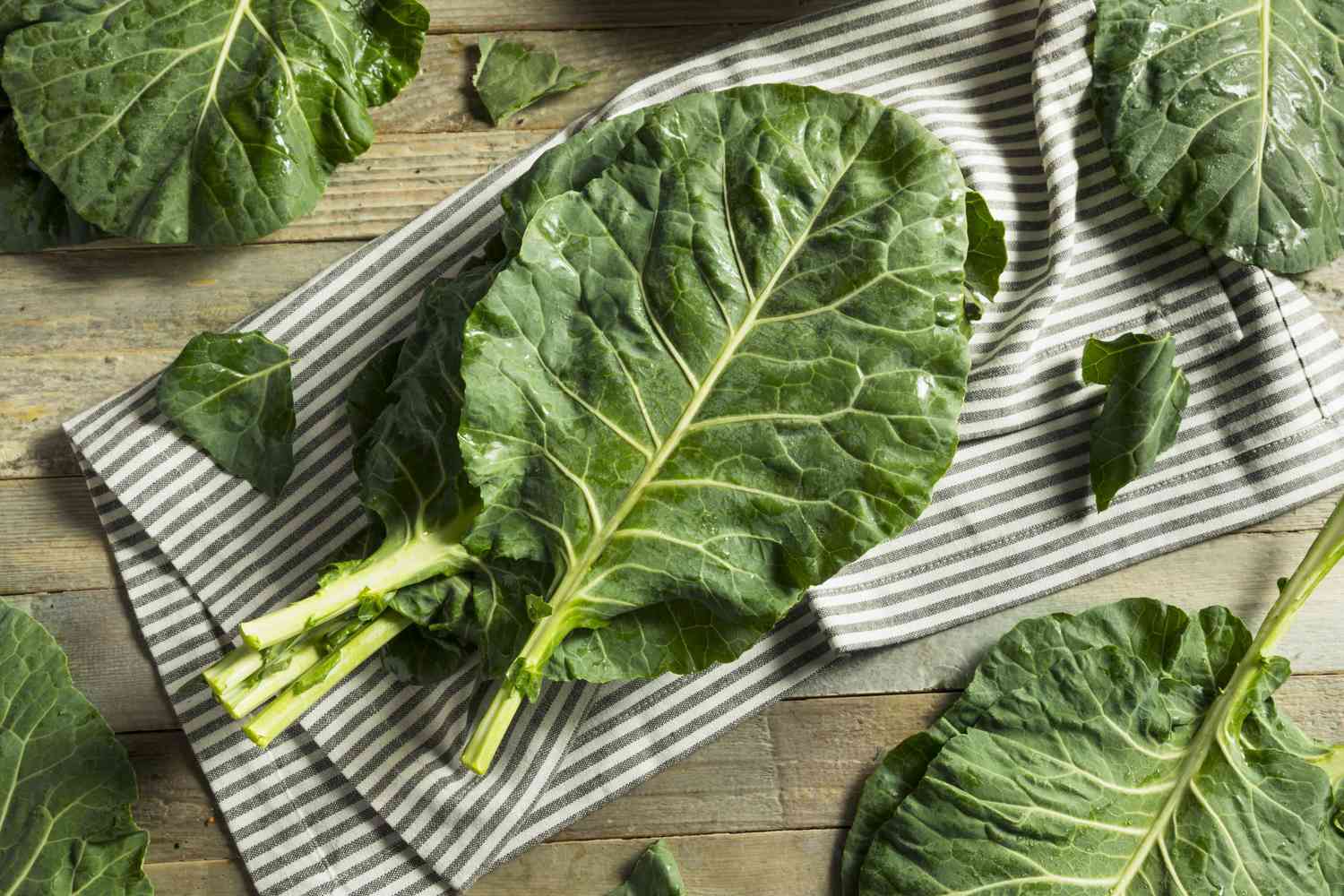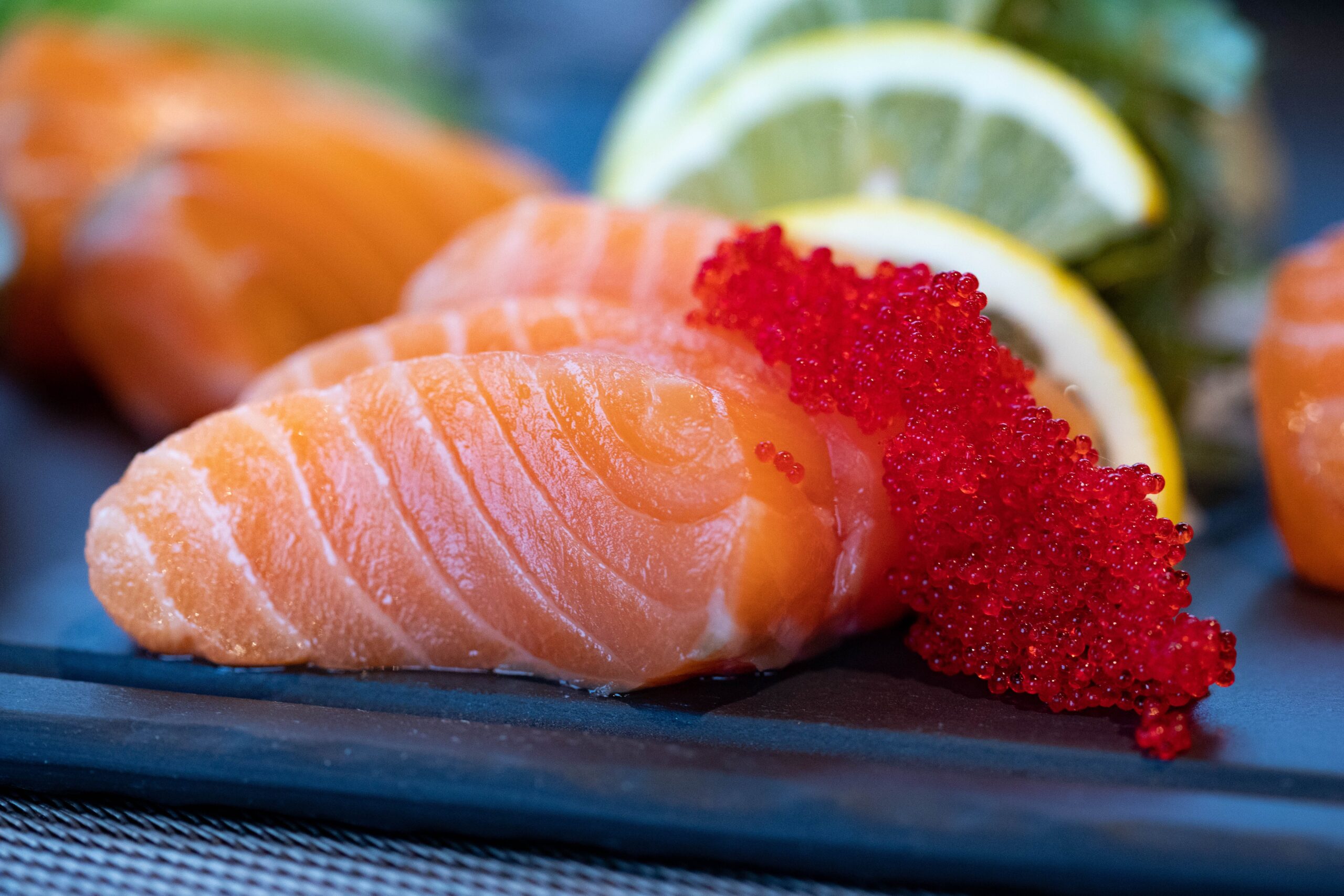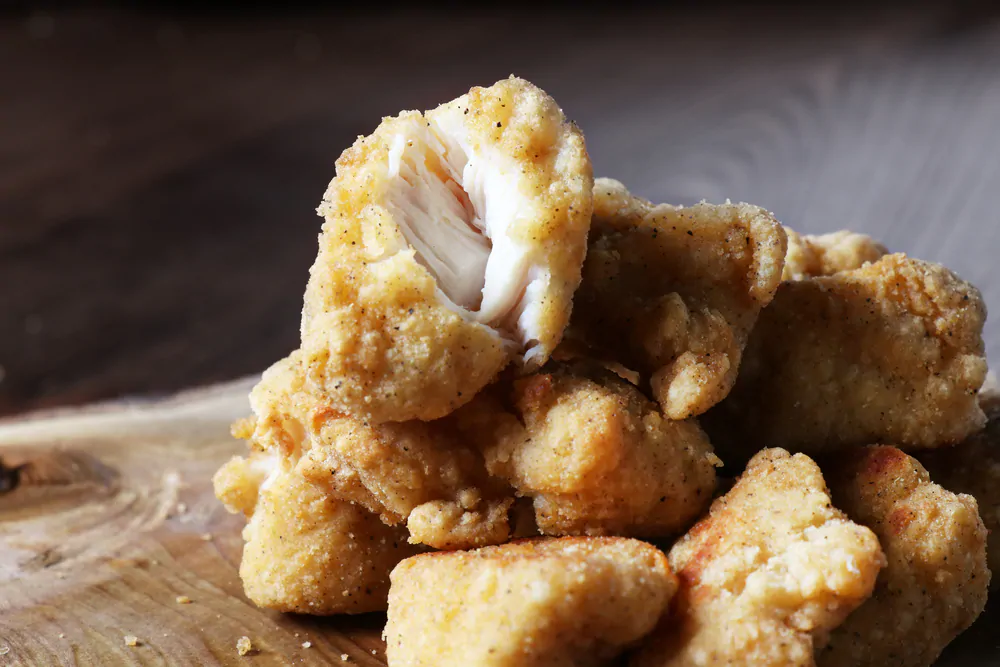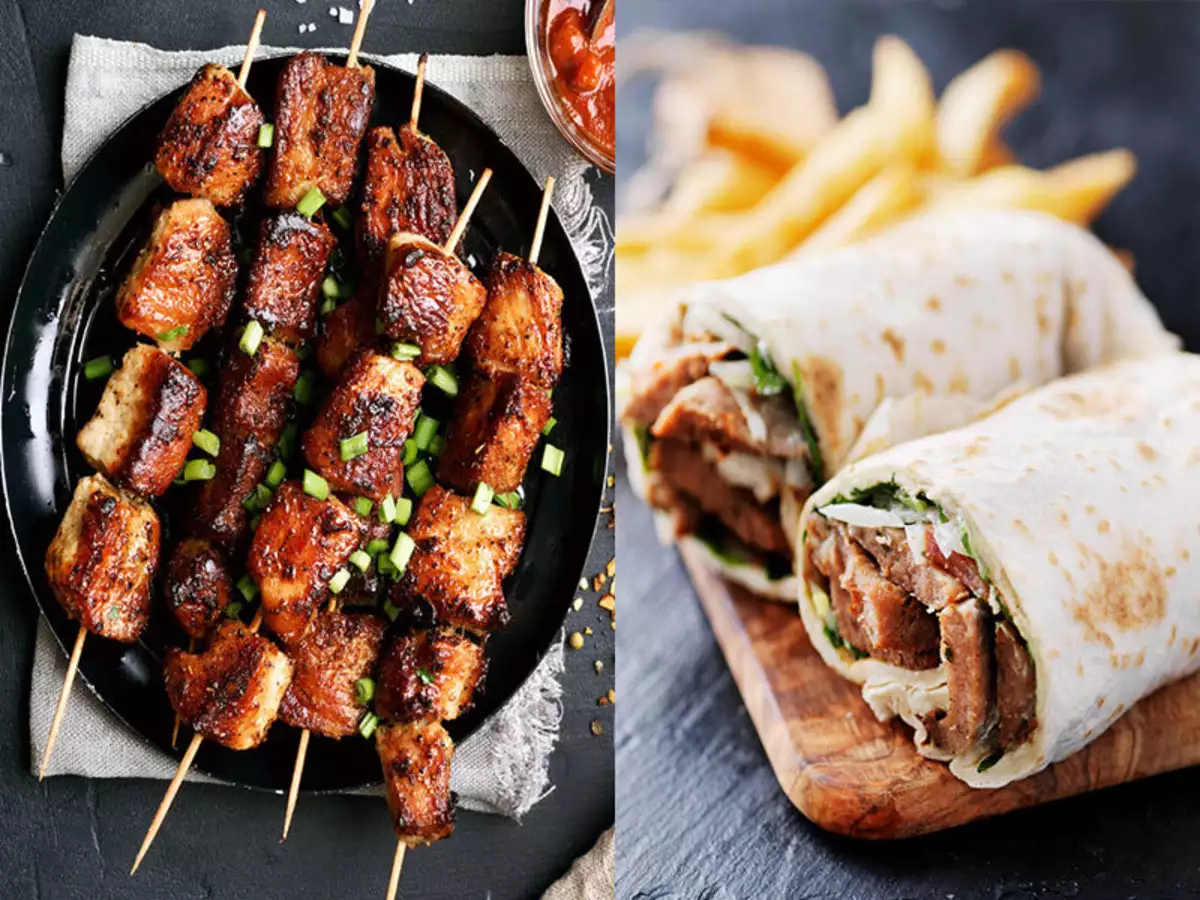Collard greens are a leafy vegetable known for their dark green, sturdy leaves and slightly bitter taste. In the UK, they are referred to as “spring greens” or “spring cabbage,” often used in cooking and salads.
Collard greens, or Brassica oleracea, are a leafy vegetable from the cabbage family. In the United Kingdom, collard greens are commonly referred to as spring greens or simply greens.
They are similar to kale or cabbage in appearance, featuring dark green, sturdy leaves that are thick and fibrous.
Collard greens contain a mild bitterness and a distinct texture that softens with cooking.
Traditional British cuisine often uses these nutritious greens in dishes like soups, stews, or stir-fries. Collard greens are rich in vital vitamins, minerals, and dietary fiber, making them valuable to a balanced diet.
What Are Collard Greens in the UK and Why?
In the United Kingdom, collard greens are often called “spring greens” or “spring cabbage.” Collard greens are leafy vegetables known for their robust, dark green leaves and slightly bitter taste.
They belong to the same family as cabbage and kale. While their name may differ in the UK, their culinary characteristics remain the same.
Spring greens, hence their name, are commonly available during the spring months and are valued for their versatility in various dishes.
They can be boiled, steamed, sautéed, or used in salads, providing a nutritious addition to meals. Despite the name change, collard or spring greens continue to be a popular and wholesome ingredient in British cuisine.
How to Cook and Prepare Collard Greens?
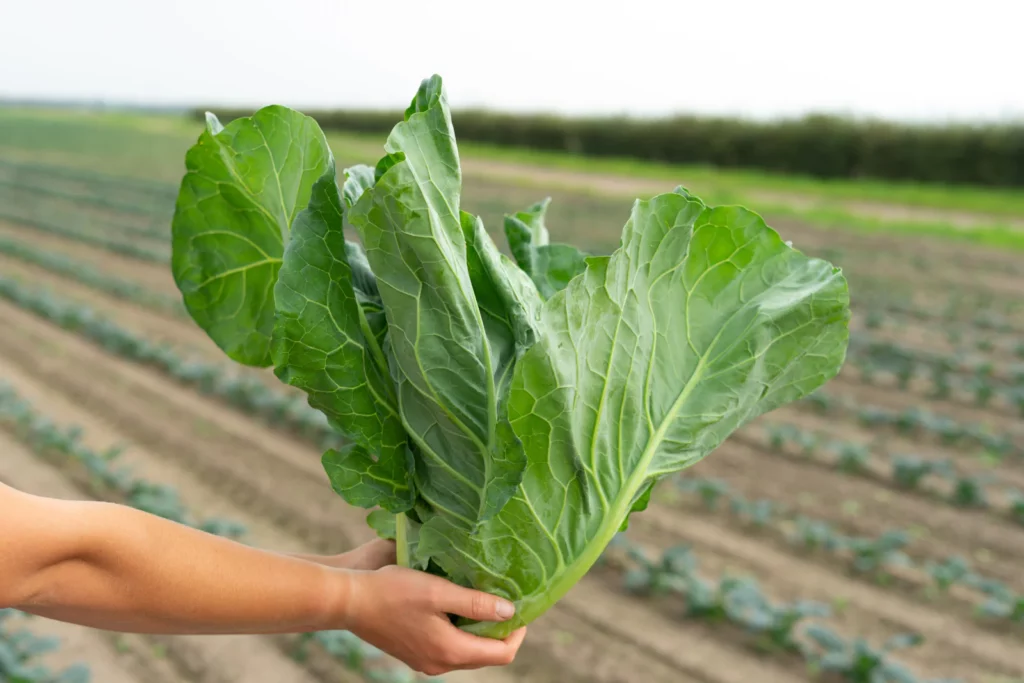
Preparing collard greens involves a few simple steps to transform these hearty, leafy greens into a delicious and nutritious dish. Here’s an essential guide on how to prepare collard greens:
Ingredients:
- Collard greens
- Olive oil or cooking fat
- Onion (optional)
- Garlic (optional)
- Salt and pepper
- Broth or water (optional)
- Vinegar or lemon juice (optional)
- Instructions:
Cleaning and Trimming: Start by washing the collard greens thoroughly under cold water. Clean the leaves to remove dirt and debris, then trim the central tough stem by folding the leaf in half and cutting it out.
Cutting: Stack a few leaves on top of each other and roll them up tightly. Then, slice the rolled-up leaves into thin strips, creating ribbons. The size of the ribbons can vary based on your preference.
Sautéing: Heat a pan on medium heat and add olive oil or cooking fat, optionally including onions and garlic for more flavor. Sauté until softened and aromatic.
Adding Collard Greens: Add the sliced collard greens to the pan. Toss them in the oil and aromatics. Collard greens can be quite sturdy, so you should stir them occasionally until they start to wilt.
Seasoning: Add salt and pepper to the collard greens according to your taste for seasoning. For getting extra flavor, consider including seasonings such as red pepper flakes, smoked paprika, or cumin.
Moisture and Cooking: If the collard greens seem dry or are sticking to the pan, you can add a splash of broth, water, or even a bit of vinegar or lemon juice for extra moisture and flavor. Cover the pan with a lid and let the greens cook for about 10-15 minutes or until they reach your desired level of tenderness.
Taste and Adjust: Taste the collard greens and adjust the seasoning as needed. If they’re still too tough for your liking, you can continue cooking them a bit longer.
Serving: Once the collard greens are cooked to your liking, remove them from the heat. Serve them as a side dish, in a grain bowl, or alongside your favorite protein.
Remember, collard greens are quite versatile, so feel free to experiment with different flavors and ingredients to suit your taste preferences.
What are Different Recipes with the Collard Greens?
Collard greens, also known as spring greens in the UK, can be used in a variety of recipes. Here are some different ways to prepare and enjoy collard greens:
Sautéed Collard Greens
Sauté collard greens with garlic, onions, and a vinegar or lemon juice splash for preparing a flavorful side dish.
Collard Green Wraps
Use blanched collard green leaves to substitute tortillas in wraps. Fill them with your choice of protein, veggies, and condiments.
Southern-Style Collard Greens
Slow-cook collard greens with smoked meat (like ham hocks or bacon), onions, and spices for preparing a classic Southern food.
Collard Green Chips
Bake or air-fry collard green leaves seasoned with olive oil and your favorite spices until crispy for a healthy snack.
Collard Green Smoothie
Add blanched collard greens to your morning smoothie for an extra boost of nutrients without altering the flavor significantly.
Collard Green Pesto
Blend collard greens, nuts, garlic, Parmesan cheese, and olive oil to bring a unique and nutritious twist on traditional pesto.
Collard Green Salad
Use raw collard greens in salads. Gently rub the leaves with some olive oil and lemon juice to enhance their tenderness and flavor.
Collard Green Stuffed Peppers
Chop cooked collard greens and mix them with rice, beans, and spices to stuff bell peppers for a wholesome and colorful meal.
Collard Green Tacos
Fill collard green leaves with taco fillings like beans, cheese, salsa, and avocado slices for a low-carb taco alternative.
Collard Green Stir-Fry
Stir-fry collard greens with other vegetables and your choice of protein in a savory sauce for a quick and nutritious stir-fry.
Remember that collard greens have a slightly sturdy texture, so they benefit from cooking methods that tenderize them, such as sautéing, steaming, or slow cooking. Experiment with these recipes to find your favorite way to enjoy collard greens’ unique flavor and nutritional benefits
Collard Greens Uses and Preparations
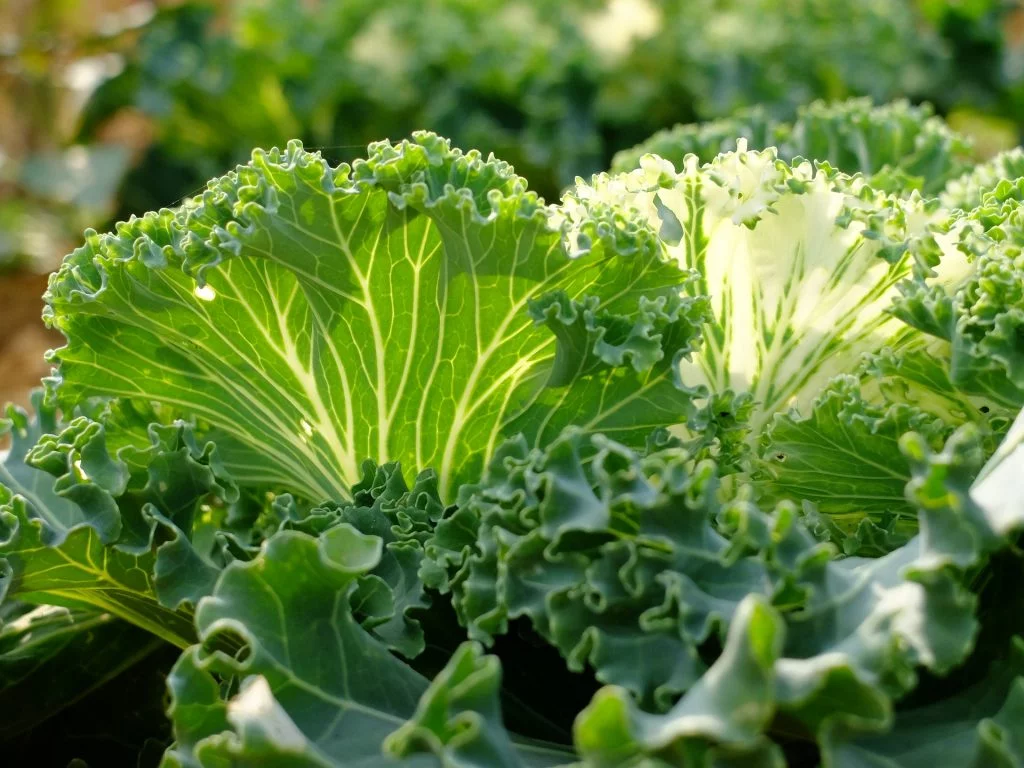
Collard greens, also known as spring greens in the UK, offer a range of uses and preparation methods. Here are some ways to use and prepare collard greens:
Cooked as a Side Dish
Cook collard greens in a pan with garlic, onions, and a bit of vinegar to craft a flavorful and wholesome side dish.
Stuffed Collard Greens
Roll up a mixture of rice, ground meat, and spices in blanched collard green leaves, then bake them with tomato sauce for a flavorful dish.
In Soups and Stews
Add chopped collard greens to soups, stews, or broths to introduce their earthy flavor and enrich the nutritional content.
Braised Collard Greens
Slow-cook collard greens with broth, bacon, or smoked meat for a tender, hearty dish often enjoyed in Southern cuisine.
Blanched for Wraps
Blanch the leaves briefly to make them pliable, then use them as wraps for various fillings like grains, vegetables, and protein.
In Smoothies
Blend collard greens into smoothies with fruits, yogurt, and liquid for extra vitamins and minerals.
Chopped in Salads
Finely chop or massage raw collard greens to make them more tender, then add them to salads for a unique texture and flavor.
Collard Green Chips
Season collard green leaves with olive oil and spices, then bake them until crispy to make a healthier alternative to potato chips.
Stir-Fried Collard Greens
Quickly stir-fry collard greens with garlic, ginger, and other vegetables for a quick and nutritious Asian-inspired dish.
Pesto or Sauces
Blend collard greens, nuts, Parmesan cheese, garlic, and olive oil for a lively pesto or pasta sauce suitable for diverse dishes.
In Breakfast Dishes
Add sautéed collard greens to scrambled eggs, omelets, or breakfast burritos for an extra nutritional boost.
In Sandwiches and Wraps
Use collard greens as a leafy wrap in place of tortillas or bread for a low-carb, gluten-free option.
Pickled Collard Greens
Pickle collard greens with vinegar, spices, and a touch of sweetness for a tangy and unique condiment.
Collard greens’ hearty texture and slightly bitter taste make them versatile for both cooked and raw applications. Experiment with these uses and preparation methods to discover how collard greens can enhance your culinary repertoire with their nutritional value and distinctive flavor.
FAQs
- What are collard greens called in the UK?
In the UK, collard greens are commonly known as “spring greens” or “spring cabbage.”
- Are collard greens and spring greens the same thing?
Yes, collard greens and spring greens are the same vegetables. They both refer to the dark green, leafy vegetable with slightly bitter leaves.
- How do collard greens differ from regular cabbage?
Collard greens have larger, flat leaves than traditional cabbage’s rounder leaves. They also have a slightly bitter taste.
- Are collard greens popular in British cuisine?
Yes, collard greens, known as spring greens, are widely used in British cooking. They are often boiled, steamed, or sautéed as a side dish or ingredient in various recipes.
- What season are spring greens available in the UK?
Spring greens are typically in season during the spring months, from March to May, although they may also be available in the winter months.
- How do you cook spring greens?
Spring greens can be cooked similarly to other leafy greens. They can be boiled, steamed, sautéed, or even added raw to salads.
- Are spring greens nutritious?
Yes, spring greens are packed with vitamins and minerals like vitamin K, vitamin C, and calcium, making them a nutritious part of a well-rounded diet.
- Can you Eat Freeze Spring Greens?
Yes, you can freeze spring greens. Blanch them in boiling water for a minute, then cool them in ice water before freezing. Frozen spring greens are great for use in soups and stews.
- How do spring greens compare to kale and spinach?
While spring greens, kale, and spinach are all leafy greens, each boasts distinct flavors and textures. Spring greens have a milder flavor compared to kale and spinach.
- Can I use spring greens as a substitute in recipes calling for collard greens?
Yes, you can generally use spring greens as a substitute for collard greens in recipes. They serve as fitting substitutes in a range of dishes with a comparable texture and flavor.
Conclusion
Collard greens are a leafy vegetable often eaten in the southern United States. They are related to the cabbage family and have a robust flavor.
In the UK, collard greens are referred to as spring greens and are often used in traditional British cuisine.
Collard greens offer versatile preparation options—sautéing, steaming, and braising—while seamlessly fitting into dishes like soups, stews, and stir-fries.







